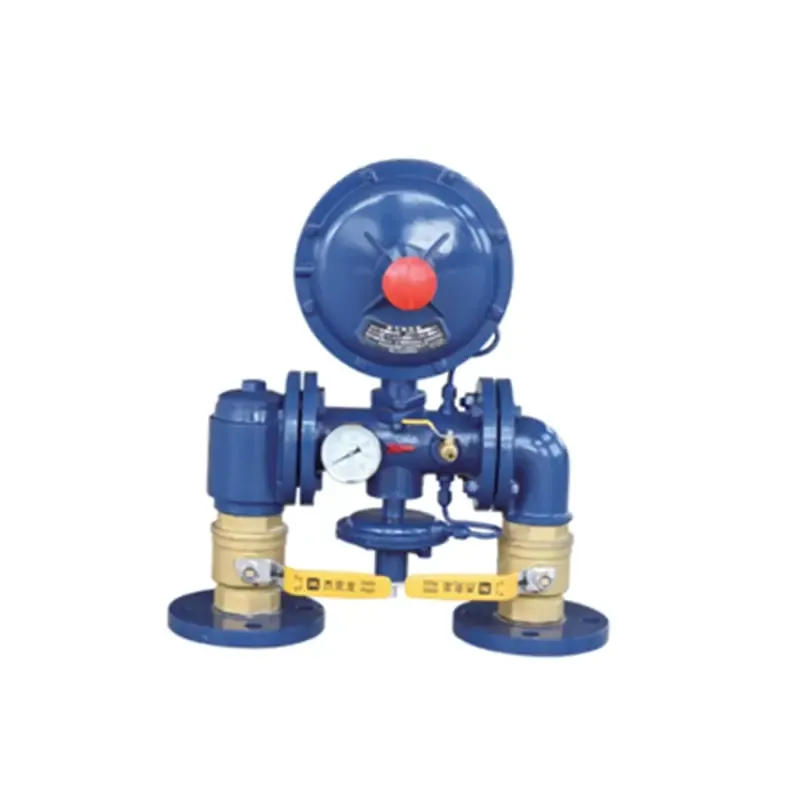
Dec . 07, 2024 10:42
Back to list
pneumatic valve
Understanding Pneumatic Valves Types, Functions, and Applications
Pneumatic valves are crucial components in pneumatic systems, playing a significant role in controlling the flow of compressed air to various mechanical actuators, tools, and machinery. These valves are designed to regulate air pressure, control the direction of airflow, and facilitate the automation of machines in a variety of industries. This article delves into the types, functions, and applications of pneumatic valves, providing insights into their importance and versatility.
Types of Pneumatic Valves
Pneumatic valves come in various types, each serving a distinct purpose. The most common types include
1. Directional Control Valves These valves are designed to control the direction of airflow within the system. They are essential for operating actuators and can be manually operated, mechanically actuated, or electrically controlled. The most common formats are the 2/2 valve (two ports, two positions), 3/2 valve (three ports, two positions), and 5/2 valve (five ports, two positions).
2. Pressure Control Valves These valves regulate the pressure within a pneumatic system to prevent equipment from exceeding safe operating limits. They include pressure relief valves, pressure reducing valves, and pressure sequence valves. Each type plays a role in maintaining optimal functioning and protecting against potential failures caused by excessive pressure.
3. Flow Control Valves These valves manage the rate of airflow in a pneumatic system. By adjusting the flow, these valves can fine-tune the speed of actuators or tools. Common types include needle valves, which provide precise control, and flow control valves with adjustable orifices.
4. Shut-off Valves As the name suggests, shut-off valves are used to stop the flow of air in a pneumatic system. They are essential for maintenance work and system control, ensuring that air supply can be safely cut off when needed.
Functions of Pneumatic Valves
The primary function of pneumatic valves is to control the flow and direction of compressed air within a system. This is achieved through a variety of mechanisms
- Actuation Pneumatic valves can be actuated electronically, pneumatically, or manually, depending on the requirements of the application. Automated systems often employ solenoid-actuated valves, which provide precise control over airflow and can integrate seamlessly with programmable logic controllers (PLCs).
pneumatic valve

- Regulation By controlling airflow and pressure, pneumatic valves help maintain consistent performance across pneumatic systems
. This regulation ensures that tools and machinery operate effectively and safely.- Isolation Pneumatic valves provide isolation within a system, allowing for maintenance and troubleshooting without the need to depressurize the entire system. This feature improves efficiency in industrial environments.
Applications of Pneumatic Valves
Pneumatic valves are ubiquitous in various industries due to their reliability and efficiency. Some common applications include
- Manufacturing In automated manufacturing processes, pneumatic valves control assembly lines, robotic arms, and other machinery, facilitating the efficient movement of components.
- Automotive Pneumatic systems are employed in automotive manufacturing for spraying, painting, and operating tools. Valves play a critical role in ensuring precision and quality in production.
- Packaging In packaging industries, pneumatic valves manage the movement and operation of packers and sealers, ensuring that products are efficiently packed and secured.
- Construction Pneumatic tools, such as nail guns and impact wrenches, rely on pneumatic valves to control air supply and, consequently, tool performance.
Conclusion
Pneumatic valves are integral to the functioning of pneumatic systems across various industries. Their ability to control airflow, regulate pressure, and facilitate automation makes them indispensable in modern manufacturing and machinery. As industries continue to evolve, the importance of pneumatic valves will only grow, highlighting the need for continued innovation and improvement in this essential technology. Understanding the different types and applications of pneumatic valves allows engineers and technicians to optimize their pneumatic systems for efficiency and reliability.
Next:
Latest news
-
Safety Valve Spring-Loaded Design Overpressure ProtectionNewsJul.25,2025
-
Precision Voltage Regulator AC5 Accuracy Grade PerformanceNewsJul.25,2025
-
Natural Gas Pressure Regulating Skid Industrial Pipeline ApplicationsNewsJul.25,2025
-
Natural Gas Filter Stainless Steel Mesh Element DesignNewsJul.25,2025
-
Gas Pressure Regulator Valve Direct-Acting Spring-Loaded DesignNewsJul.25,2025
-
Decompression Equipment Multi-Stage Heat Exchange System DesignNewsJul.25,2025

